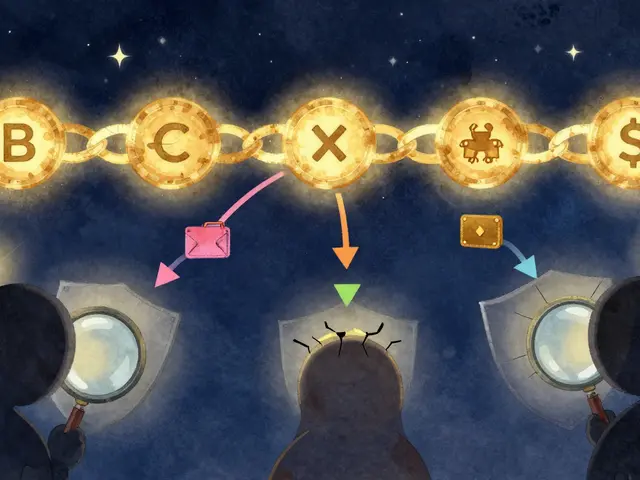IPFi: The Hub Where Internet Protocol Meets Crypto Finance
When diving into IPFi, the blend of internet protocol ideas and decentralized finance tools, you’ll notice it covers a lot of ground. First off, airdrop, a token giveaway method that rewards users for specific actions is a cornerstone – IPFi encompasses airdrop strategies that let projects grow fast. Next, crypto mining, the process of validating blocks and earning new coins fuels the network’s security, and IPFi requires knowledge of crypto mining economics to estimate costs and profits. Then there’s stablecoin, a pegged digital asset designed to keep its price steady, which influences IPFi’s DeFi applications by providing low‑volatility liquidity. Finally, decentralized finance, financial services built on blockchain without traditional intermediaries ties everything together, letting users trade, lend, and earn without banks. All these pieces form a web where regulations, token design, and user behavior constantly interact.
Why These Elements Matter in the IPFi Landscape
Understanding airdrops helps you spot real opportunities versus hype. Many posts on this site break down airdrop mechanics – from the VerseWar VERSE token to the CAKEBANK giveaway – so you know which steps are safe and which are red flags. Mining, on the other hand, isn’t just about raw hash power; it’s about location, energy costs, and tax regimes. Our ranking of crypto mining‑friendly countries for 2025 shows you where to set up a farm without getting burned by high electricity bills. Stablecoins bring stability to volatile markets, making it easier to hold value while you wait for the next jump. We compare XTUSD with USDT, USDC, and DAI to highlight audit quality, reserve transparency, and risk factors. DeFi platforms rely heavily on multisig wallets for treasury security – see why DAO treasuries adopt Gnosis Safe to lock up funds. Meanwhile, evolving regulations in Iran, Cyprus, and Egypt shape how IPFi projects can move money across borders. Posts about sanctions‑driven crypto adoption in Iran or Egyptian bank monitoring give you a real‑world sense of how policy drives innovation. All these topics intersect: a new airdrop might use a stablecoin as its reward, the mining sector may shift because a country changes its tax law, and DeFi protocols adjust their smart contracts to comply with fresh legal guidance. When you read the collection below, you’ll see how each article plugs into the bigger IPFi puzzle.
Now that you’ve got the big picture, scroll down to explore detailed guides, deep‑dive analyses, and step‑by‑step tutorials. Whether you’re hunting for the next legit airdrop, planning a mining operation, comparing stablecoins, or navigating the latest regulatory shifts, the posts below give you hands‑on knowledge you can act on today.
PiperX v3 Crypto Exchange Review - Deep Dive into the IPFi DEX
An in‑depth PiperX v3 crypto exchange review covering tech, fees, risks, and how it fits into the IPFi ecosystem.





